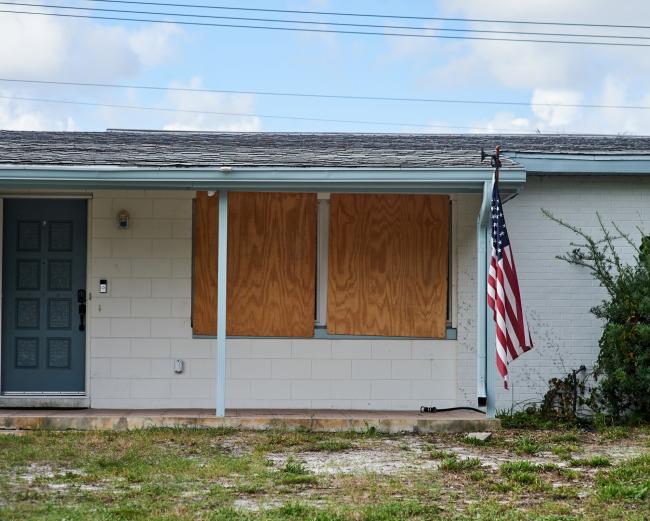(Bloomberg) -- Hurricane Dorian reached major hurricane status as it heads toward Florida, with the potential to stall near the coast and bring a prolonged period of wind, rain and storm surge.
The hurricane’s center was about 625 miles (1,005 kilometers) east of West Palm Beach, Florida, as of 2 p.m. New York time, with maximum sustained winds of 115 miles per hour, according to the U.S. National Hurricane Center. That wind speed means it has reached the Category 3 level on the Saffir-Simpson scale.
Dorian is an “extremely dangerous” storm that “poses a significant threat to Florida and the Northwestern Bahamas,” the National Hurricane Center said in an advisory. The hurricane could make landfall late Monday or early Tuesday.
Storm surge could reach 10 feet (3 meters) or more just north of where the center of Dorian crosses the coast, Pydynowski said. The storm is then expected to turn north and drag destruction up Florida into Georgia and beyond. The forecast suggests the system will continue dumping rain as it moves through the region into the middle of next week.
“The big news is that we are dealing with a potentially historic weather event again and it will definitely rival what Michael did to the Panhandle last year,’’ said Jim Rouiller, chief meteorologist at the Energy Weather Group outside Philadelphia. “Florida is going to get really hammered by this.’’
Dorian is threatening to become the strongest storm to hit anywhere in Florida since Hurricane Michael landed as a Category 5 hurricane, causing about $10 billion in insured losses.
On its current path, it’s about a $40 billion or $50 billion dollar storm, according to Chuck Watson, a disaster modeler with Enki Research. If Dorian hits Fort Lauderdale and meanders up through Orlando, that is “realistically a $200 Billion (!) event,” he wrote in an email.
The center of the storm’s “cone of uncertainty” is Jupiter, Florida, about 25 miles (40 kilometers) north of President Donald Trump’s Mar-a-Lago resort. Trump canceled a planned trip to Poland this weekend because of the storm.
Florida Prepares
About 2,000 national guard members are being mobilized in Florida on Friday, and the number is likely to double by late Saturday. Governor Ron DeSantis said he had spoken to President Trump about the storm on Wednesday night and was guaranteed "all the resources we need."
"This is a major event," DeSantis said at a press conference Friday, noting that the track still remained highly uncertain. "We’ve just got to be prepared for all those circumstances."
Two high pressure systems could pin Dorian between them as it nears the coast or gets on shore and that could create a situation similar to what happened when Hurricane Harvey stalled over Texas bringing record rainfall, said Rouiller.
“At this point Monday it will slow down considerably, it will come to a crawl because we are getting the Bermuda high over the Atlantic and the high over the southern Plains,’’ Rouiller said. “They are basically going to be tugging at Dorian and it doesn’t know which way to go.’’
By the end of next week there could be two more hurricanes in the Atlantic, Rouiller said. “these will track similar to Dorian and I still think we are under the gun beyond that,” he said.
To map assets in Hurricane Dorian’s path, click here
Florida’s electric utility companies lined up personnel and equipment in anticipation of blackouts and downed lines. NextEra Energy Inc (NYSE:NEE). subsidiary Florida Power & Light reported having 13,000 workers ready to respond and said it was reaching out to utilities in other states to secure additional crews and equipment.
Some gasoline stations were starting to run empty as residents prepared for the storm and the city of Miami said it was removing dockless scooters from its streets to avoid them becoming projectiles in high winds.
